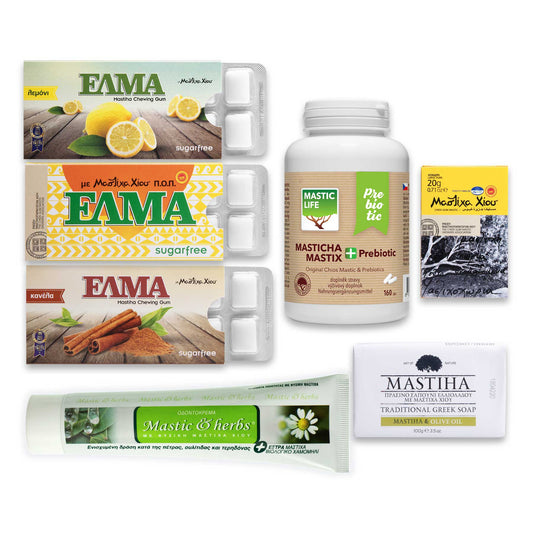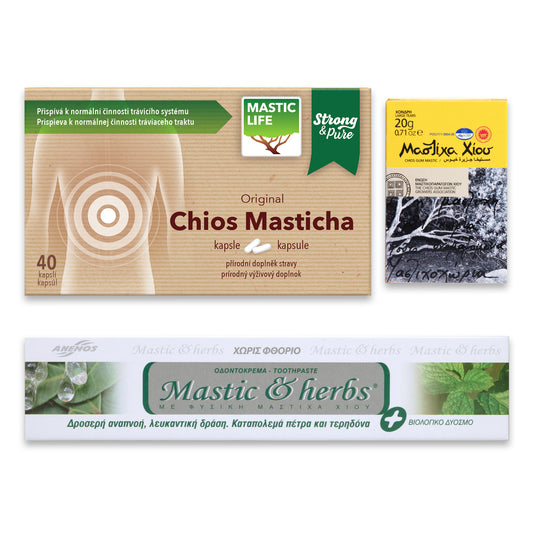Pyrgi: The Painted Mastic Village
It is the largest and for many the most important medieval village on Chios. Pyrgi is particularly admired for its well-preserved architecture, which, despite numerous modern interventions, still retains the character of a fortress medieval settlement.
Pyrgi: the painted village
The village of less than a thousand inhabitants, located about 25 kilometres south of the capital, takes its name from the massive defensive tower (pyrgos in Greek) that dominated the village. Pyrgi was built on the model of medieval fortress architecture, which was first applied to large monasteries. This defensive system was intended to protect the villagers and their wealth from raids by pirates and other enemies. The original perimeter walls of the village and the four corner watchtowers can still be seen today.
There were only two gates leading into the original village surrounded by square-shaped defensive walls. The Lower Gate on the east and the Upper Gate on the west, which were always closed in the evening and in cases of emergency. The houses that stood on the edge of the village had no windows or doors on the outside, forming an impenetrable wall.
In the centre was a massive tower, the defensive and administrative centre of the entire village, which was built in the time of the Janovans. The entrance to the tower was situated several metres above the ground only by a pull-up ladder. This was a sophisticated system to protect the local inhabitants, who could take refuge here in case of danger. The whole tower was about 18 metres high, but only the foundations have survived. It was significantly damaged in 1881 and in 1937 the villagers decided to demolish it completely.
Pyrgi – The Painted Village
| Category | Details |
|---|---|
| Population | Less than 1,000 inhabitants |
| Location | 25 km south of Chios town |
| Settlement Type | Medieval fortified village |
| Historic Features | Massive tower (pyrgos), original walls, 4 corner watchtowers, 2 gates (Lower & Upper) |
| Churches | Byzantine Church of Agii Apostoli with frescoes |
| Houses | Stone, two-storey houses with internal staircases and roof bridges |
| Xysta | Unique geometric plaster designs (triangles, diamonds, circles) using black sand on white plaster |
| Interesting Fact | Original defensive system protected villagers from pirates and enemies |
Churches
At the village square, Byzantine church of Agii Apostoli has preserved exquisite frescoes inspired by themes from the Old and the New Testament. The mere presence of that grand church attests to the village's origins not being traced back to the Genoans; rather, certain adjacent settlements were seamlessly integrated into the pre-existing village during the period of Genoese Occupation.
Houses
All the original medieval houses were two-storeyed and built of stone because of possible fires. All of them have similarly designed interiors. On the ground floor, the shadiest part of the house, there were larders, food stores and stables for animals. An internal staircase led up to the living area. All the houses were of similar height and in many places were connected by a 'bridge' across the street. The inhabitants were thus able to move around the village even on the roofs of the houses.
Xysta
In Pirgi, visitors shall encounter a distinctive form of ornamentation on house facades. Xysta are intricate designs etched into plaster, unparalleled in Greece and remarkably striking in their craftsmanship and final product. The patterns consist of simplistic shapes: triangles, diamonds, circles, and semi-circles. The technique is based on scraping black sand over a meticulously whitened plaster. Black geometrical patterns on a white backdrop create a captivating visual display. Xysta elegantly enhance the walls of both churches and houses, leaving a striking and unexpected impression.

Mastic for your gastrointestinal tract
-
 8-week treatment 🗓️
8-week treatment 🗓️Mastic 8 weeks
Regular price 30.700 FtRegular price38.300 FtSale price 30.700 FtSale -
 60-day treatment 💪
60-day treatment 💪Mastic Gum Extra for 60 days
Regular price 54.600 FtRegular price68.600 FtSale price 54.600 FtSale -
 Gift set 🎁
Gift set 🎁Mastic „Life with Mastic"
Regular price 22.800 FtRegular price25.000 FtSale price 22.800 FtSale -
 Gift set 🌿
Gift set 🌿Mastic „Pure Mastic“
Regular price 11.800 FtRegular price12.900 FtSale price 11.800 FtSale




